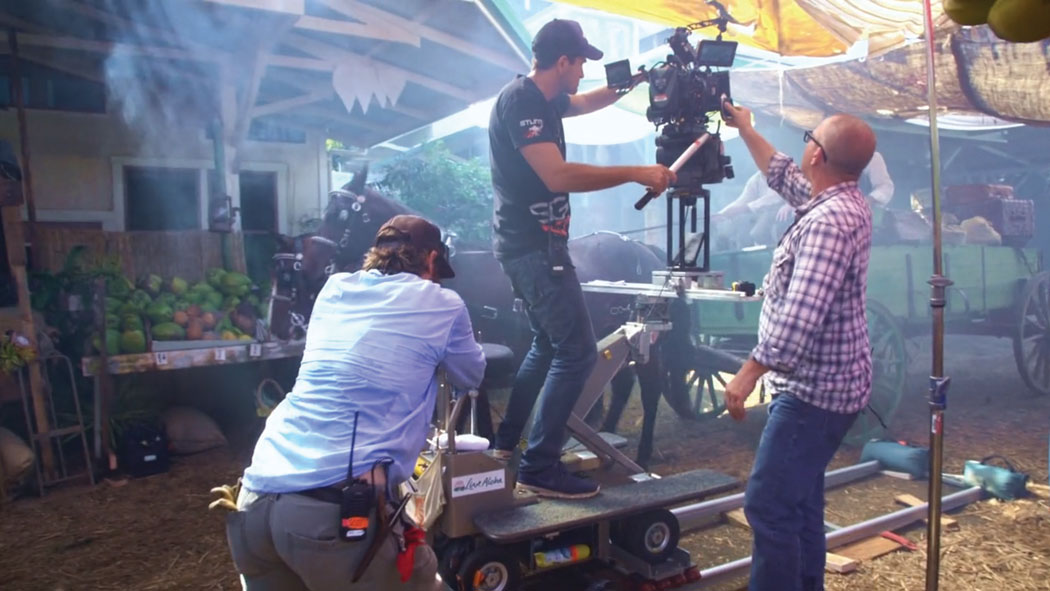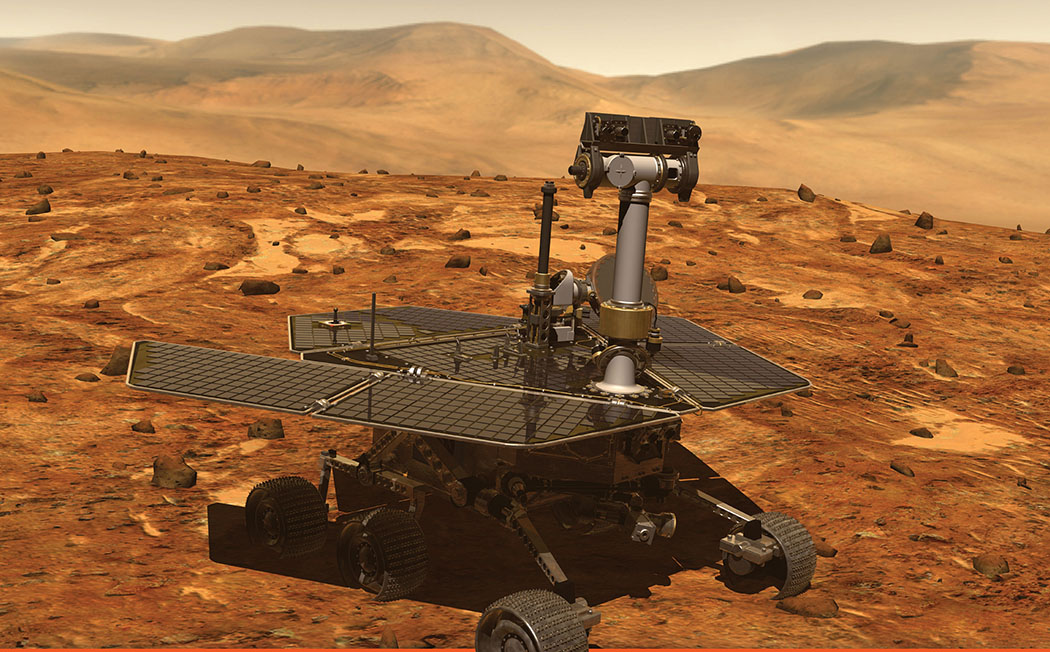
Messages to Mars: Artist Jon Lomberg Sends Relics from Today for Civilizations Tomorrow
 By Jon Lomberg
By Jon Lomberg
NASA landed the Curiosity rover on Mars last August to begin a two-year study on Mars at Gale Crater, near the Martian equator. The crater has features that were formed by water long ago, so it is a good place to explore for ancient signs of life. Curiosity is filled with complex instruments to study Mars’ surface and atmosphere. Curiosity also carries a simple experiment for school kids on Earth: a sundial to watch. In the same way a sundial is used on Earth, this Martian shadow can reveal the season, latitude, and time of day on Mars.
The NASA team that designed this sundial invited me to do some of the actual artwork on this artifact with fellow artist, Tyler Nordgren. Around the edges is a message intended for the future human inhabitants of Mars who might find it someday.

This is the fourth artwork of mine with Mars as the subject.
My first attempt to reach the Red Planet started with a death and ended in failure. In 1993, the famous science fiction writer, Isaac Asimov, was dying of cancer. Carl Sagan’s space advocacy group, The Planetary Society (TPS), proposed to honor Asimov by sending his stories to Mars on a CD designed to survive the extreme climate conditions there. Sagan and TPS Director Louis Friedman valued the important role that science fiction stories play in inspiring the real exploration of space. The CD was intended as a gift to any future human if they were to find it in the old spacecraft on Mars.
The CD could easily carry much more than just stories by Asimov. So to honor all the authors whose imagination propelled us into space, they would send a whole library of science fiction to Mars as a gift to the future—the first Martian Library.
At that time, The Planetary Society was working with the Russian Mars lander mission, Mars 94. The Russian Space Agency let us hitchhike a ride between planets.
Sagan and Friedman asked me to direct this project. My job was to lead the effort to select and organize the audio contents and then record them onto a space-ready CD disk. I worked with Sagan before on the Voyager Golden Records on both Voyager spacecraft, so I already knew about sending disks with messages into space.
We expanded the library to include science fiction images, spoken greetings from four people, and of course, Orson Welles, notorious War of the Worlds radio broadcast. (Unfortunately, back in 1993 we lacked room to include video files on the small 250 MB mini-CD we used.) The collection is called Visions of Mars. The fiction includes 90 stories in nine languages from 26 countries and four centuries. It includes seven full-length novels in English, French, German, and Russian.
Soon after we began, the Mars 94 launch was postponed until 1996, which gave us 18 more months to work on making the disk. We started a worldwide search for Mars-related fiction and art.
We tested our disk’s ability to survive the stresses of launch, landing, and a very long exposure to the frigid Martian environment. An ordinary CD would fall apart.
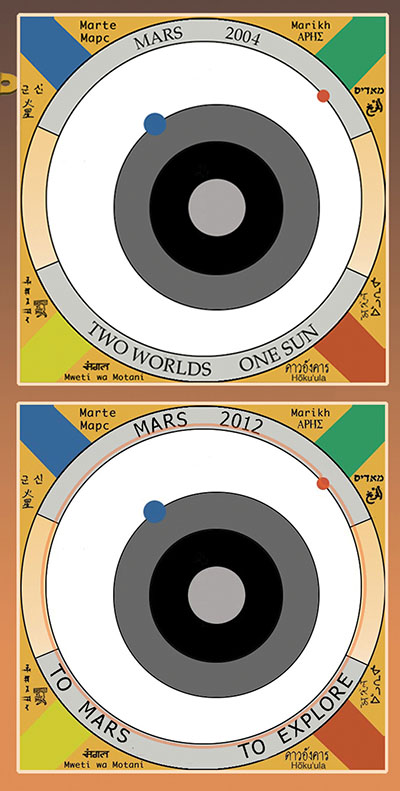
Tyler Nordgren, and Jon Lomberg. image credit: Jon Lomberg
For this reason, the final mini-disk was made of very hard and chemically inert silica glass instead of plastic. The label on the disk tells future humans on Mars the specific technology required to play the disk. Probably they will have to build a computer to play a CD-ROM. They can find the details in a museum of ancient communications technology. If they have the technology to live on Mars, they will be able to build a 20th century CD player.
Finally, on November 16, 1996, the Mars 96 spacecraft was launched from Kazahkstan—and fell into the Atlantic Ocean minutes later. The mission ended almost as soon as it began. When that happens to a spacecraft, everyone involved sees years of work destroyed in an instant.
There was no Plan B. Painful barely describes it. “Oh well,” I thought, “So much for getting my art to Mars.”
Fast-forward to 2003 and NASA’s mission to launch twin robot rovers Spirit and Opportunity to Mars. The popular science teacher Bill Nye (who succeeded Friedman as TPS Director), and astronomer Steven Squyres, leader of the rover’s camera team had an idea: a sundial serving as a student experiment on Mars. Students could observe the same physics working on both planets.
Steve’s cameras needed a color-test target to assure scientists they were seeing the correct colors of Mars. This target could also act as the sundial. All that was needed was a little post (called a “gnomon” by sundial experts) to cast the shadow.
Squyres and Nye assembled a small team to design the sundial, which we called the Marsdial. Among those scientists was also TPS’s Louis Friedman. Mars 96 had given both of us very useful experience in designing artifacts for Mars.
We were joined by Tyler Nordgren, Jim Bell, and Woody Sullivan.
This team created the design on the Marsdial’s face. Some of the area was already occupied by four color patches. These perform the Marsdial’s most important job: assuring correct color in the photos that go unscathed by our graphics.
To this we added the planetary orbits of Earth and Mars. The two planets are in the position they occupied at the time of the mission’s launch. A ring surrounds the orbits. It is traditional for every sundial to bear a motto and date. Ours says “Two Worlds, One Sun.” The right and left sections of the ring (between the languages) are mirrors that reflect the changing sky colors of Mars, which is otherwise invisible since none of the cameras can look straight up. The gray circle on the center is the position of the gnomon, or pin of the sundial that indicates the hour of the day.
I suggested decorating the dial with the written name of Mars in many different languages. We had done the same thing on the title screen of Visions of Mars to express the idea that NASA’s planetary exploration is done on behalf of the entire human species.
This left the four edges around the base of the Marsdial smooth and empty.
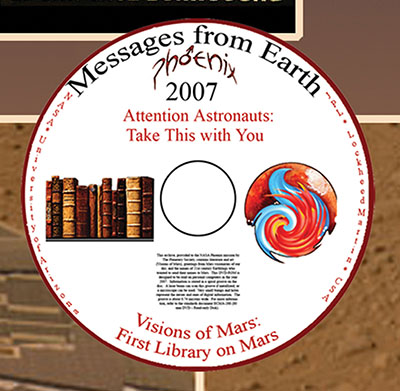
In spacecraft jargon, this is unused real estate. So I proposed that we write a message on those four edges to explain the Marsdial’s purpose. Hypothetically, Spirit or Opportunity could be discovered by the descendants of human colonists from Earth centuries from now. To these “human Martians,” each rover would be a relic of their history. They would understand the purpose of all the instruments, not why the sundial is there, unless we took advantage of the open space, so to speak.
Bill Nye and others explained why the sundial was sent to Mars with this message on the Marsdial:
“People launched this spacecraft from Earth in our year 2003. It arrived on Mars in 2004. We built its instruments to study the Martian environment and to look for signs of life. We used this post and these patterns to adjust our camera and as a sundial to reckon the passage of time. The drawings and words represent the people of Earth. We sent this craft in peace to learn about Mars’ past and about our future. To those who visit here we wish a safe journey and the joy of discovery.”
I added the illustrations, including stick figures drawn by the young children of some of the mission scientists. Unlike Visions of Mars, the only technology required to read this message is a simple magnifying glass.
Spirit and Opportunity landed safely on Mars in 2004. Each carries one of the Marsdials. And each explored its Martian surroundings for a much longer mission than expected: Opportunity sent its latest 3D view in April 2013. Following the rovers on their different journeys has felt to me like riding along with our little Marsdials across the Martian landscape. I had finally gotten something to Mars! And there was still more to come.
Ever since the failure of Russia’s Mars 96, Louis Friedman had been trying to find a way of getting Visions of Mars to Mars. Finally, he persuaded NASA to carry it aboard their Phoenix lander, destined for a successful 2008 landing on Mars. It carried our Martian Library to the northern polar regions, where it waits in deep-freeze. Someday, this disk could be found and played by our great-great-grandchildren born on Mars.
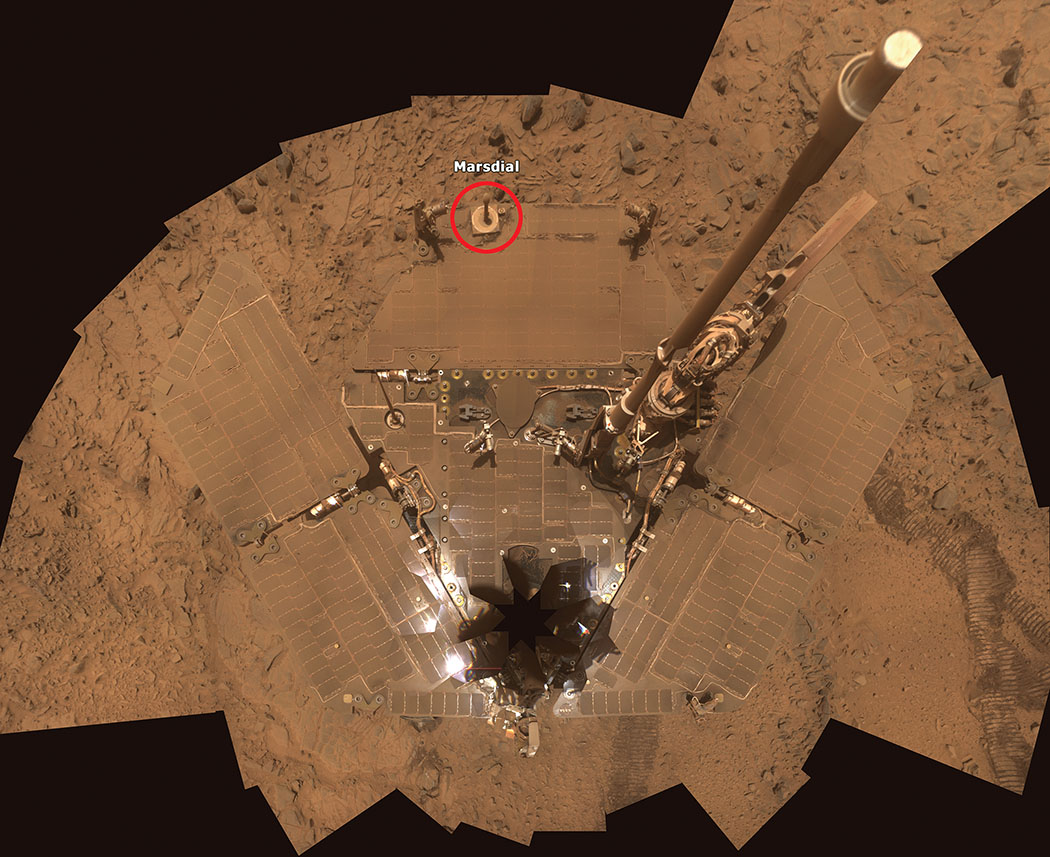
That same year, Marsdial designer, Jim Bell, a lead scientist in NASA’s Curiosity mission, contacted me. Jim wanted to use our Marsdial again as the camera calibration target. The Marsdial team discussed it and created a new motto for the new sundial, and a new message engraved around the sundial’s edges.
“For millennia, Mars has stimulated our imaginations. First, we saw Mars as a wandering red star, a bringer of war from the abode of the gods. In recent centuries the planet’s changing appearance in telescopes caused us to think that Mars had a climate like the Earth’s. Our first space age views revealed only a cratered Moon-like world but later missions showed that Mars once had abundant liquid water. Through it all, we have wondered: Has there been life on Mars? To those taking the next steps to find out, we wish a safe journey and the joy of discovery.”
For technical reasons, we were unable to change the graphic showing the positions of Earth and Mars, so the new dial has the planets at the same position as on the previous Marsdials. Perhaps some future historian on Mars will wonder why.
Like its cousins on the other rovers, Curiosity’s sundial will be photographed every day by the camera engineers, so students will have many chances to see how a shadow and a stick can tell you the time and date on Mars. Perhaps they or their children will someday get to Mars themselves.
Why send these objects to Mars? Unlike all of the other science instruments, they give us no new information about Mars. They provide a way for ordinary people to feel connected to the project. The messages can excite the interest of children and non-scientists, who perhaps do not care about details such as the chemical composition of Martian sand. These artifacts represent cultural and artistic aspects of our era that we send to distant times and places. They also express optimism that humanity will in fact survive to enjoy such a future. ❖
More about Mars messages: Planetary.org
Contact writer Jon Lomberg: JonLomberg.com


